Uday Mondal’s Solo Show in an empty industrial machine shop at Bil village.
My small town has art lovers hidden in varied corners of its several colonies, apartments, pols, gated communities, and suburban farm houses that now crowd my hometown. They don’t always come out in art galleries nor vigorously participate in auctions and often resist mingling in the who’s who attending opening evenings of shows. Nah, nah. They operate quietly, supporting exhibitions organized by those artists who don’t get the helping hand of galleries and have to depend on their own resources to exhibit their works, make direct studio visits and collect the artworks they find attractive directly from the artists, and offer spaces they own but do not actively use as studios to young artists to allow them enough time to grow their fledgling wings until they are ready to fly!
The very interesting exhibition by Uday Mondal that I visited last week at the most unusual venue is a case in point. Uday Mondal. I had not seen his work in a long, long time. A couple of decades back, Uday came to Baroda from Bengal as a student at the Faculty of Fine Arts, and made this small town his home. He married Kanika from north India, a brilliant student of museology and together they have a daughter and a nice home gradually built with love. Over the last many years, he had apparently been working at his canvases regularly and diligently, creating a body of work so large that no standard-sized gallery in town would be able to accommodate them.
So, that’s when Aley Shah, a local industrialist manufacturing transformers, stepped into the picture, led by glass sculptor, Anuj Poddar. A few years back Aley Shah had to move his industrial premises further away as his original manufacturing premises at Bil village were earmarked to be a part of ‘residential’ space. The outskirts of my small town were swallowing up these villages, farm lands and whatever industries were perched thereon. At that time Aley Shah had offered a huge machine shop in those premises, now lying idle, and the shaded open space outside to Anuj to create his glass sculptures; and Anuj has been working there for the last few years. When Anuj saw Uday’s large canvases, he could only imagine them in a space that could not be an art gallery.
Uday’s paintings capturing scenes from a Bengali wedding!
And so Uday’s wonderful solo was hosted in a vast machine shop with a high roof, grimy grey walls and floors instead of the sparkling ‘white cube’ of a traditional gallery, generalized flood lighting, with remnants of a throbbing work place standing mutely as dividers, floor markers sectioning certain areas as thematically related narratives (such as the small paintings celebrating a Bengali wedding/feast that are so different from the rest), and the paintings resting happily against old cupboards or piles of industrial machinery and only sometimes hung lazily on an unexpected stretch of a not-so-clean wall! Uday’s works emphatically explore the playful elements of everyday life and people are his focus. This he achieves by painting vignettes of youngsters (largely) relaxing on beds while reading, playing with pets, interacting with others, and so on. He infuses a vibrant dynamism in the paintings with his bold colours and strong lines drawn almost effortlessly, shifting perspectives to kind of throw off the viewer every now and then. The candid nature of the images seem like they were worked from photos, sometimes even like group selfies. Uday manages to transform them, however, scribbling and fudging the lines, painting large patches of colour, often making the composition shift perplexingly towards the abstract from the real.
Good job, Uday and Anuj, and three cheers to Aley Shah for sportingly allowing this kind of experimentation as against a run-of-the-mill display!
Mycelial Legacies III. Work by Sumakshi Singh.
Curator Deeksha Nath’s Mycelial Legacies III at the Alembic Art District gallery was a superb show of artworks by women artists, all of whom studied at the Baroda Faculty of Fine Arts at some time or another. So while most are the usual suspects, the important point is that Nath has selected some of their truly path-breaking works (and not necessarily the well-known ones), and that is what made this exhibition worth spending a lot of time at. There have been Mycelial II and Mycelial I exhibitions put together by the same curator before this exhibition, which were shown in Mumbai and Delhi respectively, with more or less the same artists. I don’t remember these exhibitions coming to Baroda. If they haven’t, it will certainly be a good idea to get them here, if Mycelial III is the standard they are following.
Mycelial Legacies III. Work by Megha Joshi.
For the first time, I saw the works of Radha Gomaty, an artist I was not really aware of (much to my annoyance) and the raw energy that was compressed in those series of small yet powerful frames, was very impressive indeed. Another was Sumakshi Singh. Her work, Untitled (from the series 33 Link Road) was breathtaking. It featured an architectural element, a decorative spiral staircase (made with thread and embroidery) that goes nowhere, and so is ‘dysfunctional simply by the lack of context’. It rises, as a staircase should, but it is single dimensional and raises questions between illusion and reality. The artist is ‘attracted to the permanence of thread which cannot be erased as easily as a drawn image’. Still another was Megha Joshi, whose creative use of vermillion-dipped cotton diya-batti (wicks) helps create visually captivating and evocative patterns and symbols related to women’s reproductive organs. Her practice focuses on ‘gender, ritual, and religion and its transcriptions on the human body, addressing the misogyny perpetuated by endless repetitive social and religious practices’. I hope nobody missed this show!
Hanuman on the Wall: Homage to the great artist, Raja Ravi Varma, Oil on Canvas by Sudhakar Tadi, in the Baroda March 2025 show.
Rukshaan Krishna is a Mumbai-based gallerist who has been supporting talented young artists from Baroda for almost two decades now. In addition to providing them with studio spaces that would help them continue with their work, organizing exhibitions in Mumbai and Delhi/Gurugram galleries to present their works, participating in the Art Fair at Delhi, and most importantly, organizing the annual show of her artists called the Baroda March every year in the month of March. The 18th edition of Baroda March opened on March 31 at the new space, Rukshaan Art, that she has recently invested it in Ballard Estate in Mumbai. The exhibition continues till April 27th – a little spark of Baroda in Mumbai!
Anand Patwardhan interacting with audience.
Atul Dalmia’s Ark Foundation for the Arts organized the screening of The World is Family (Vasudev Kutumbakam) by Anand Patwardhan, the eminent documentary filmmaker on March 21, followed by a vibrant discussion with the filmmaker post the screening. And what a superb and emotionally-fulfilling evening it was! Nobody can blend the political and the personal with the kind of flawless narrative weaving that only someone of Anand Patwardhan’s capability can pull off with elan. Patwardhan’s own large and extended family, especially his uncle, Achyut Patwardhan’s revolutionary fervor during the freedom struggle, the family’s close association with Gandhi and Nehru and others leading the freedom movement, his mother, the ceramist Nirmala Patwardhan’s roots in Karachi, Anand’s own travels to Pakistan as part of an association promoting friendship between India and Pakistan – all this wove a fascinating tale of just one family whose reach spread so far and wide. Especially as the project was started purely as a home video, to create memories of his families’ lives. For us in Baroda, Nirmala’s strong and long relationship with Ira Chaudhuri (both were students at Santiniketan) was indeed a delightful revelation.
The close companionship shared by Anand’s parents, over more than 60 years, is unbelievable and almost fairy tale like -- the easy-going Balu with a dry sense of humour and the rather sharp-tongued and irascible Nirmala – there could not be two persons so unmatched in temperament. Yet they fell in love when they were barely out of their twenties, she left her education at Santiniketan to marry Balu, and they worked through thick and thin, rarely losing their deep affection for each other, reveling in their companionship till they passed, in their eighties, a few months from one another. The world is family and family is world – how eloquently was this expressed by this wonderful film!
A truly happy bunch at the Shalimar Hotel!
And to end, on a festive note, we got the inimitable Adil Marawala to take us on an Iftaari Food Walk a week before the Eid moon was sighted. And what fun it was, walking through the lanes and bylanes of Moghulwada, weaving through crowds returning home after prayers at the several mosques in the area and kids playing cricket on the traffic-less streets, passing by the old Subhanallah Restaurant with its barakhani pots that simmer through the night, fitted into an oven, cooking the paya and other delicacies eaten traditionally for breakfast. And then the feast at the Shalimar Hotel in the shadow of the Jahangirpura Masjid … downed by falooda at Ajmeri’s!
Part of the Barakhani : Pots simmering away through the night at the Subhanallah Restaurant!




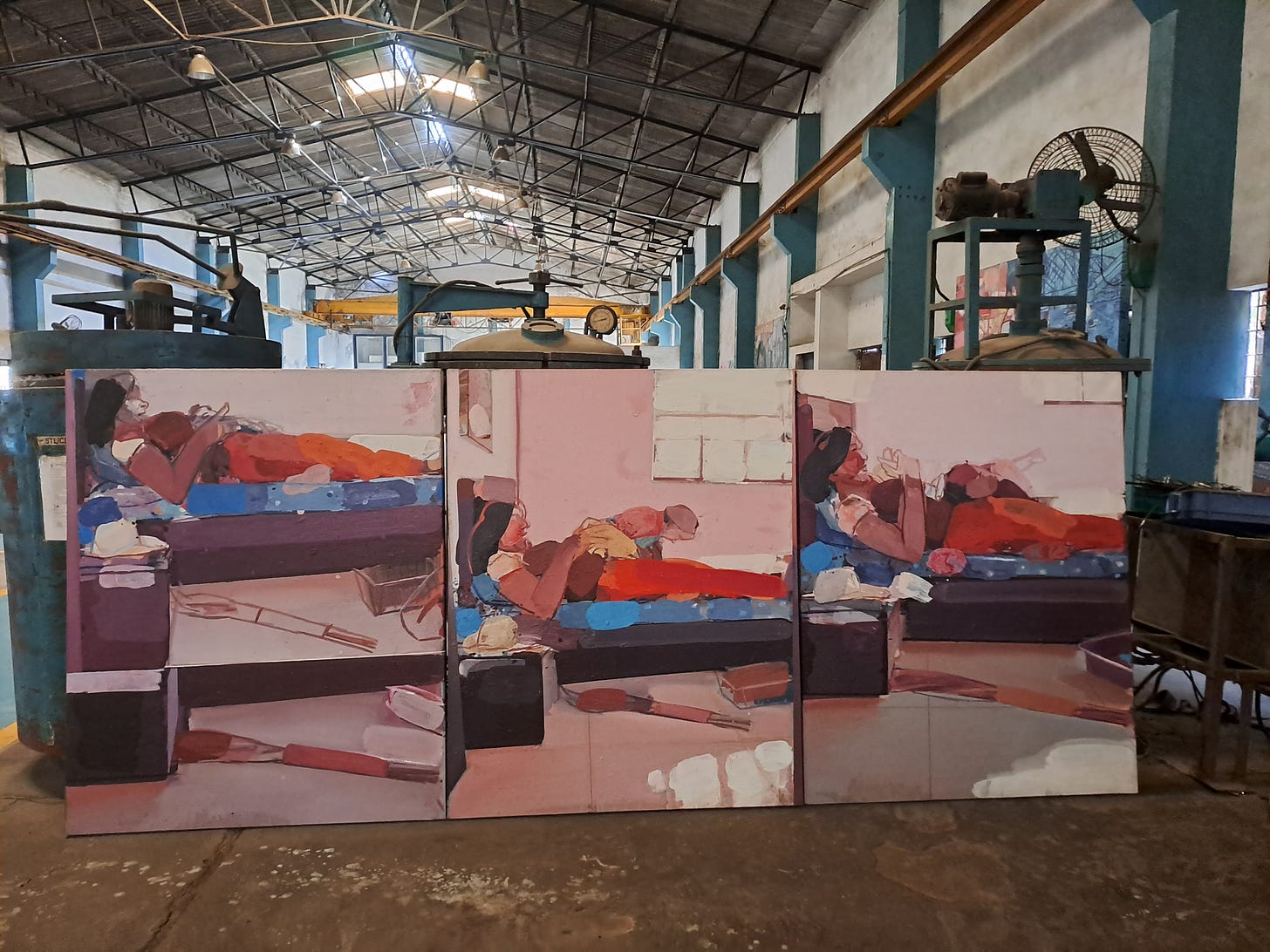
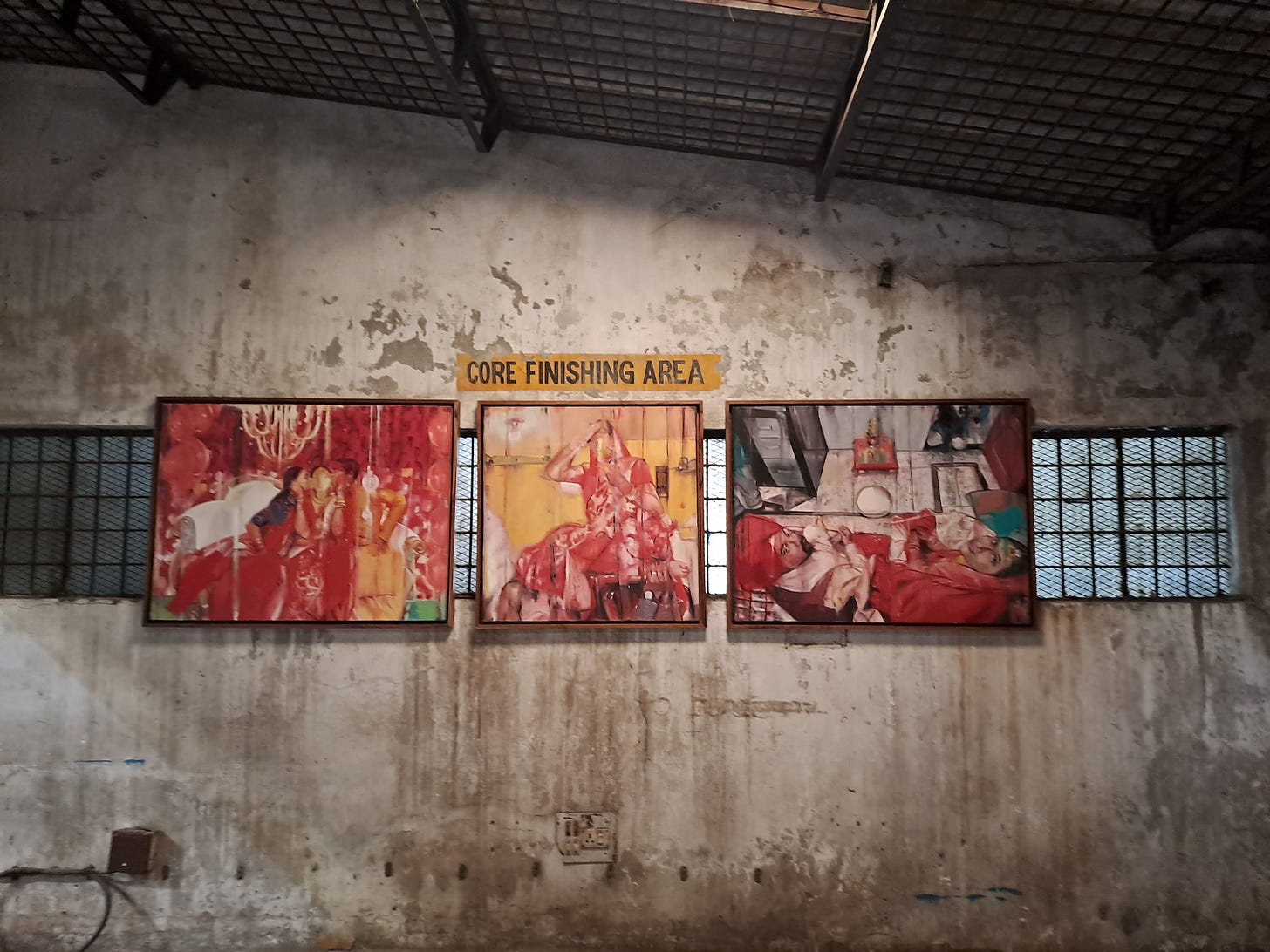
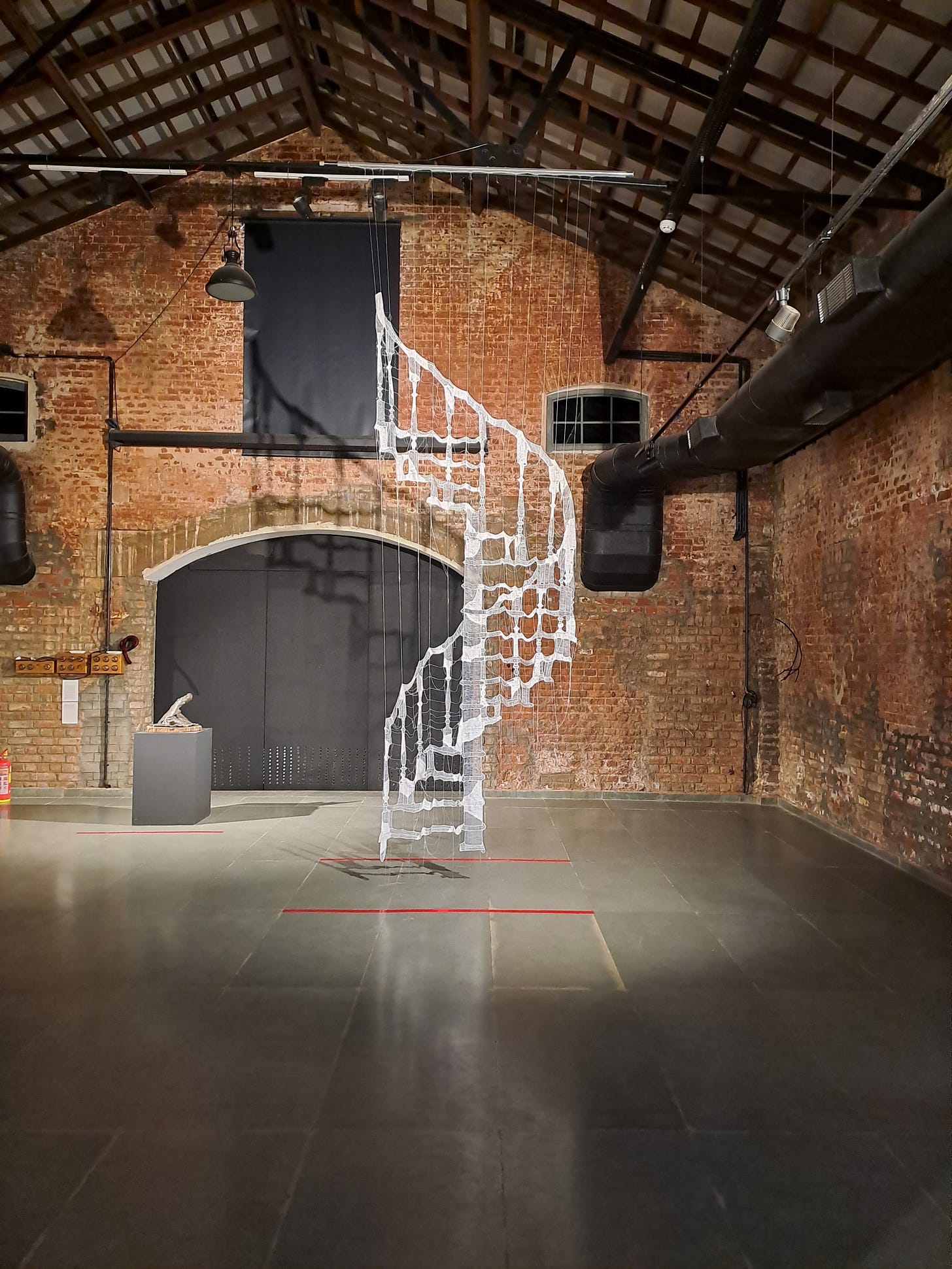
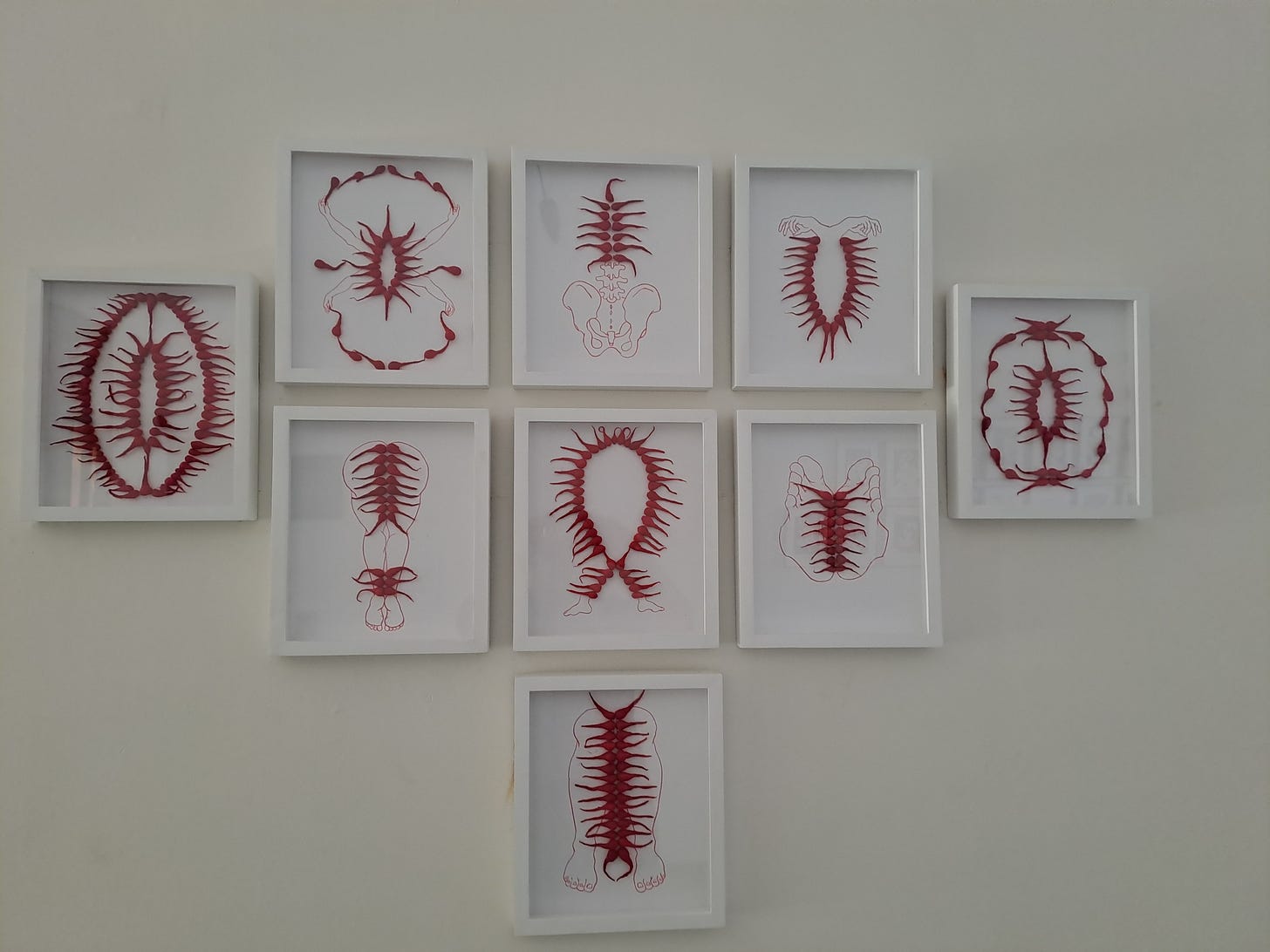
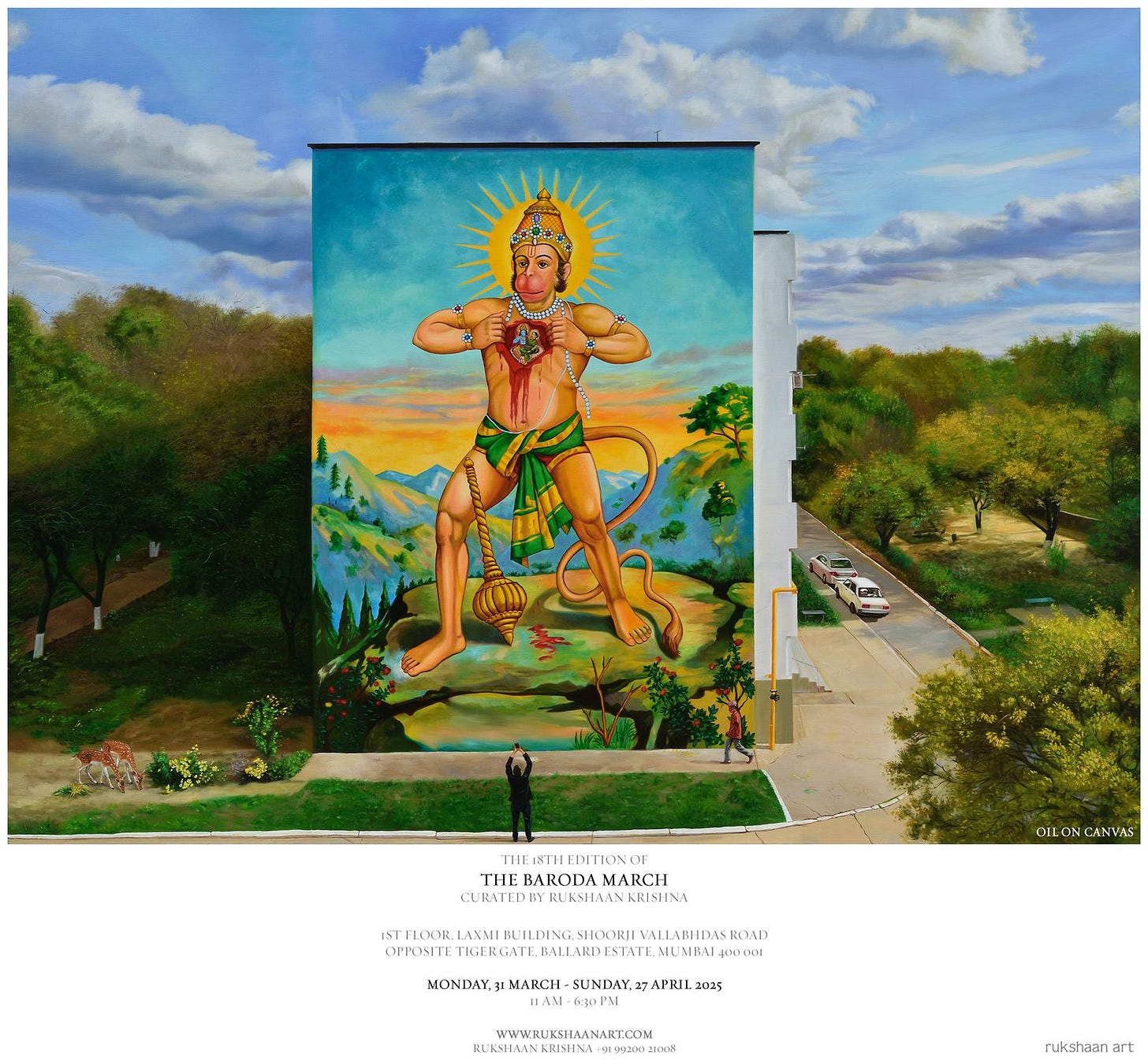
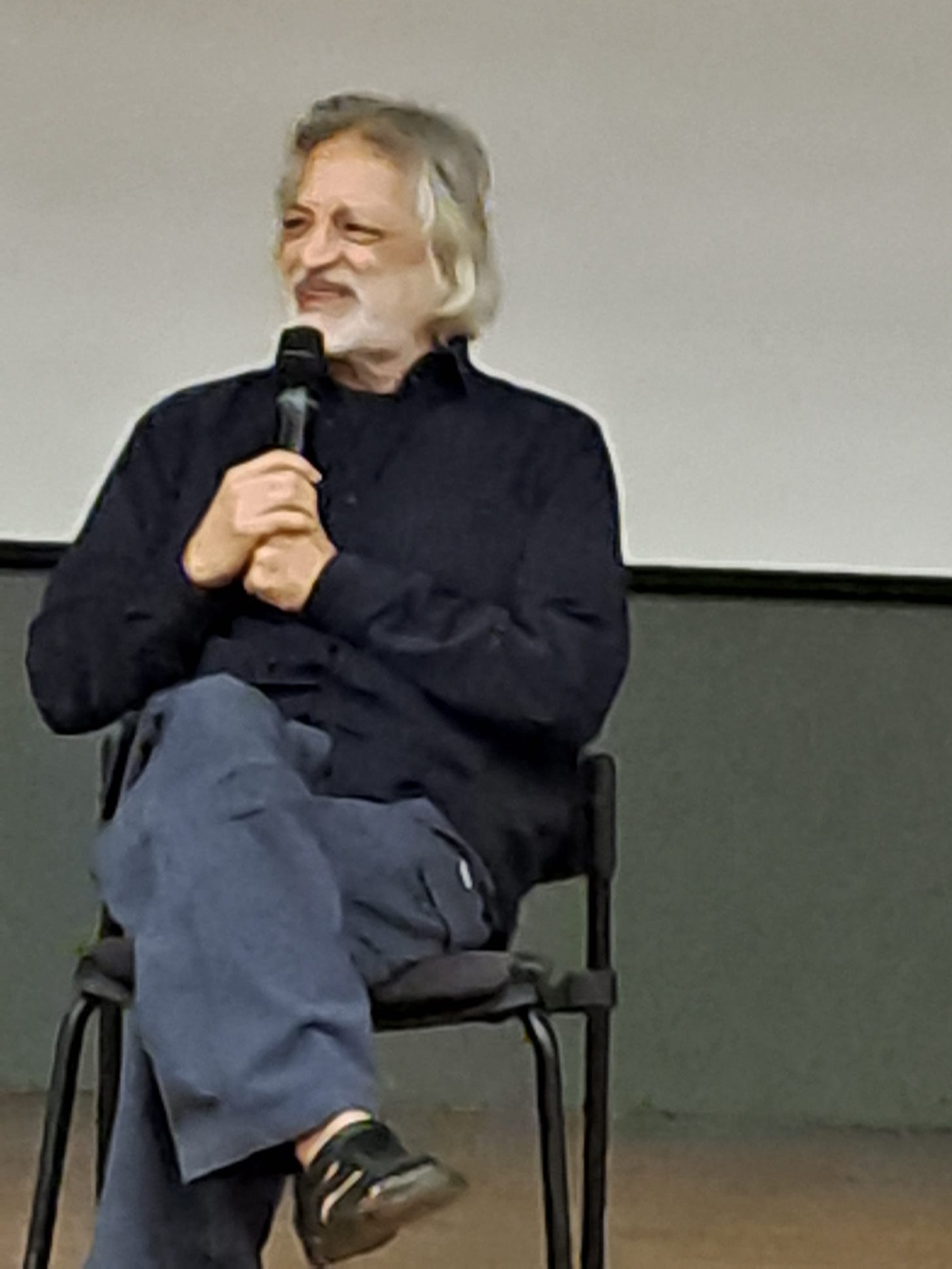

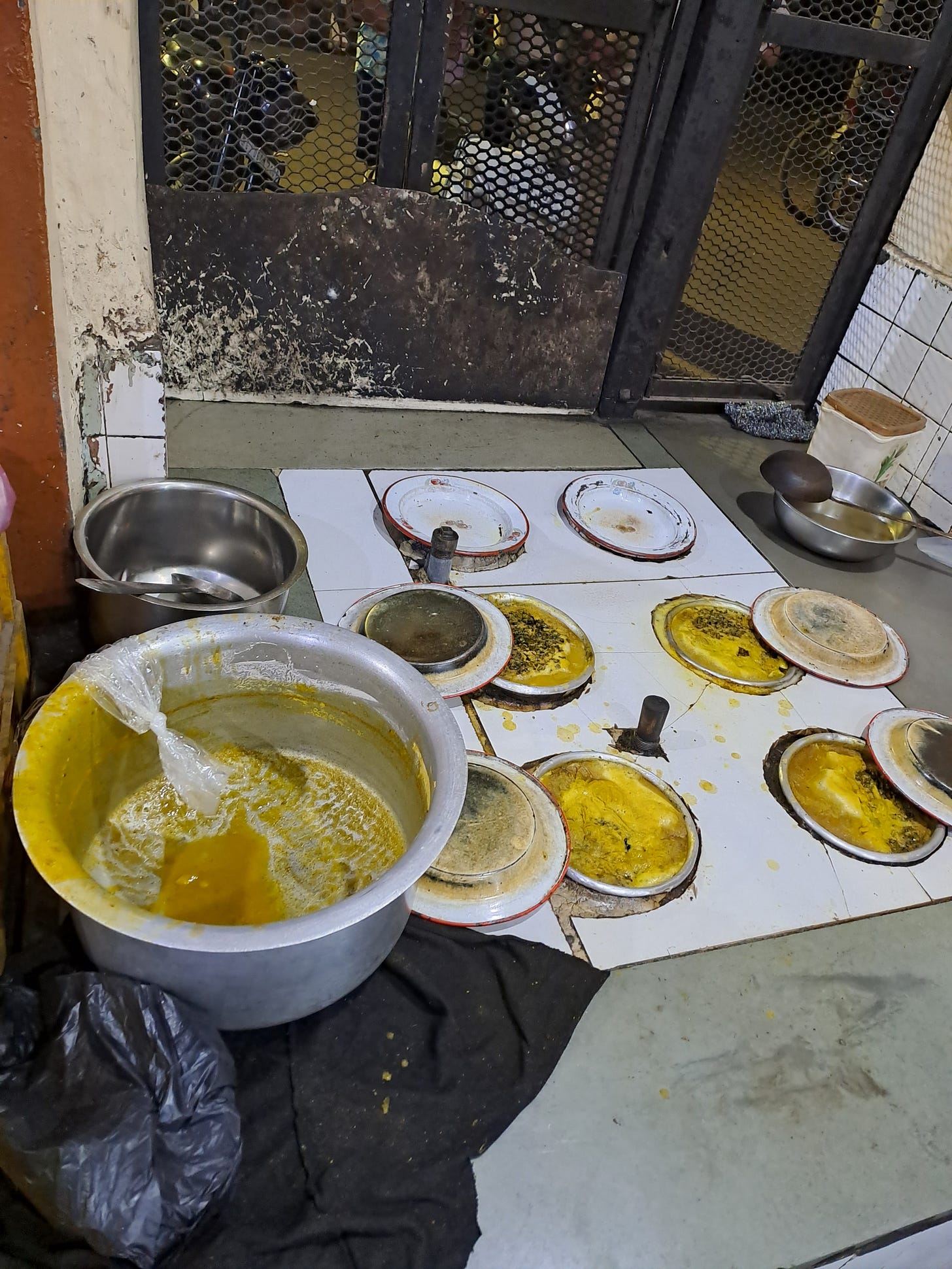
Thanks Sandhya!
I devour each word of yours and see Baroda i had not seen! Thank you for these round ups!